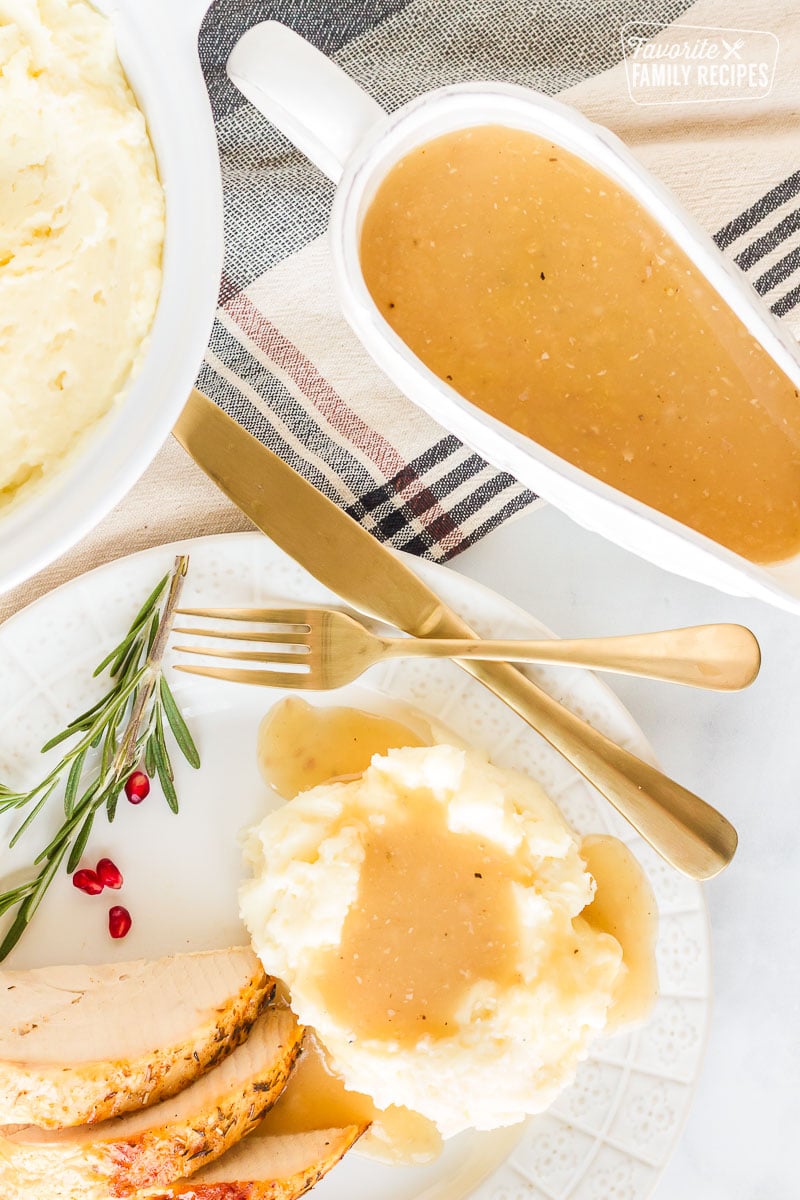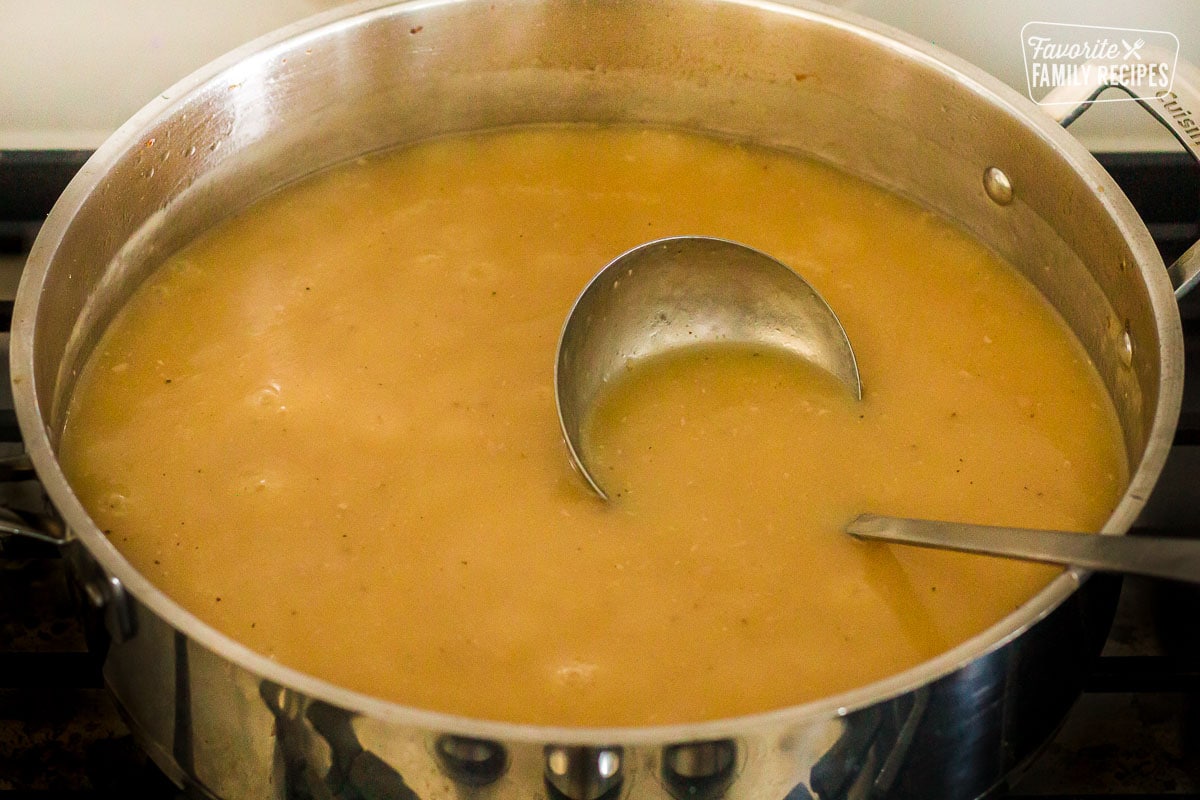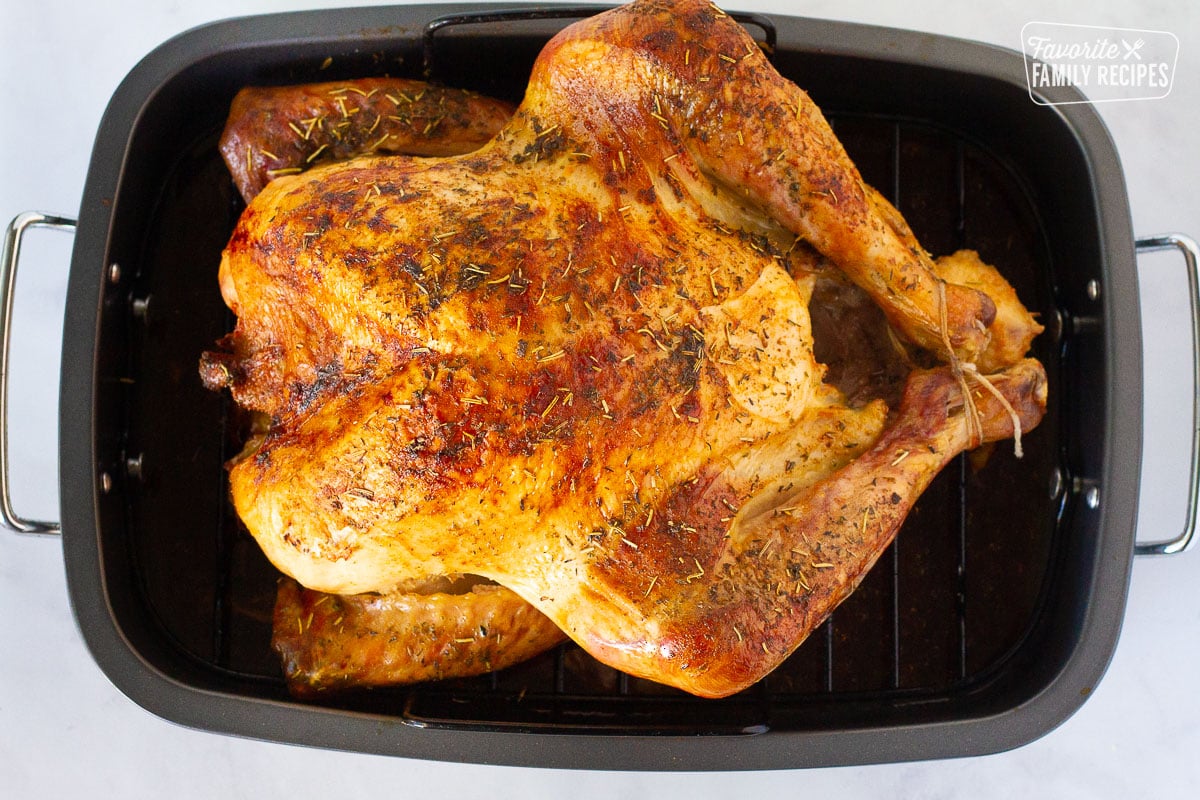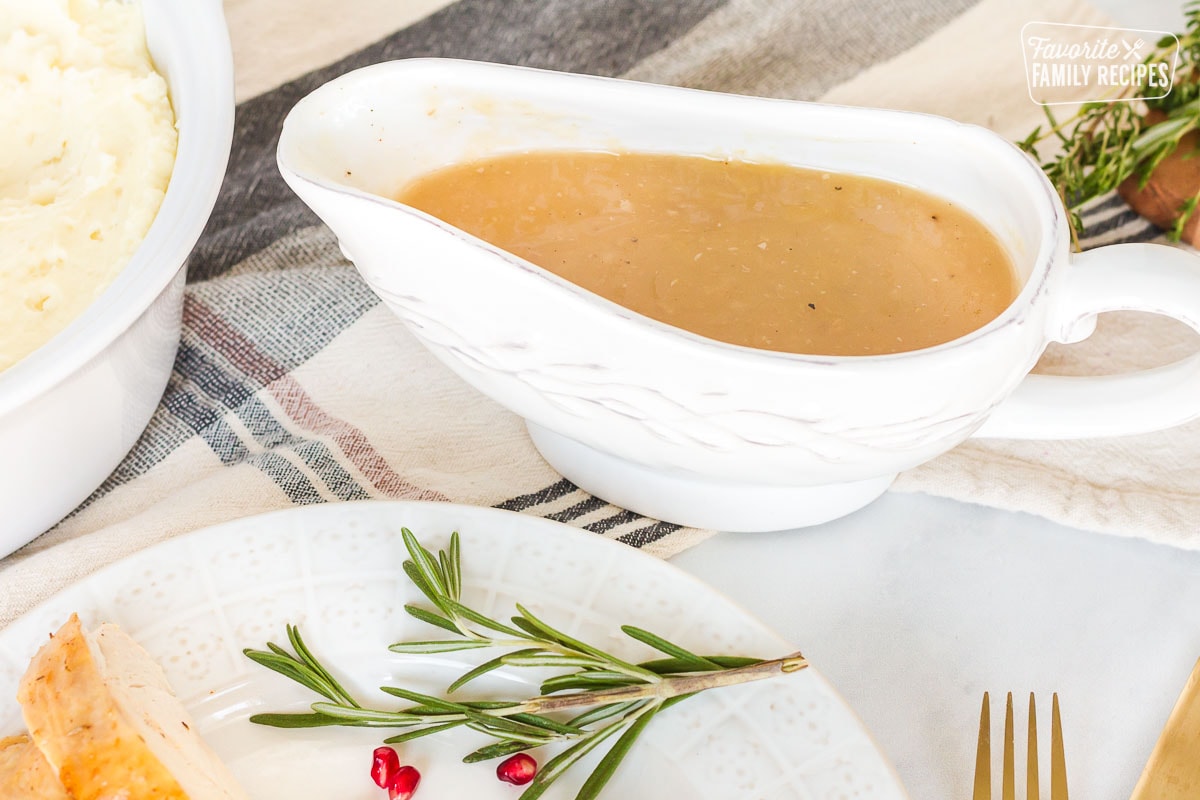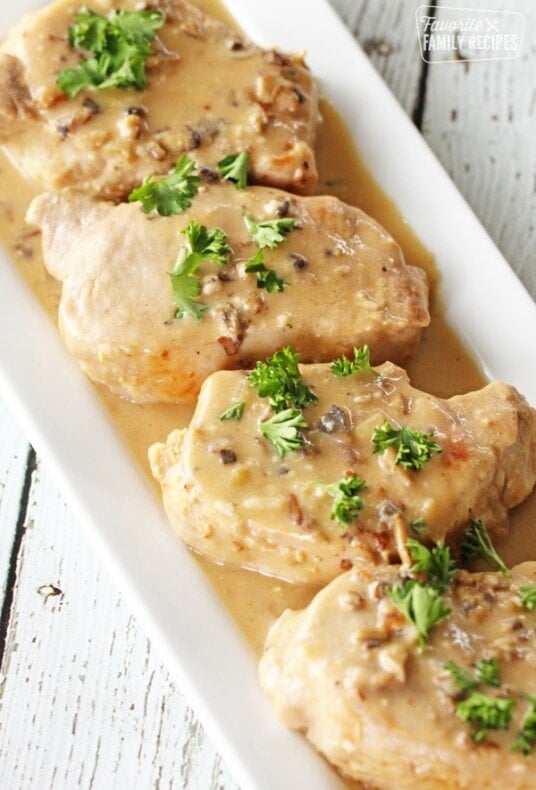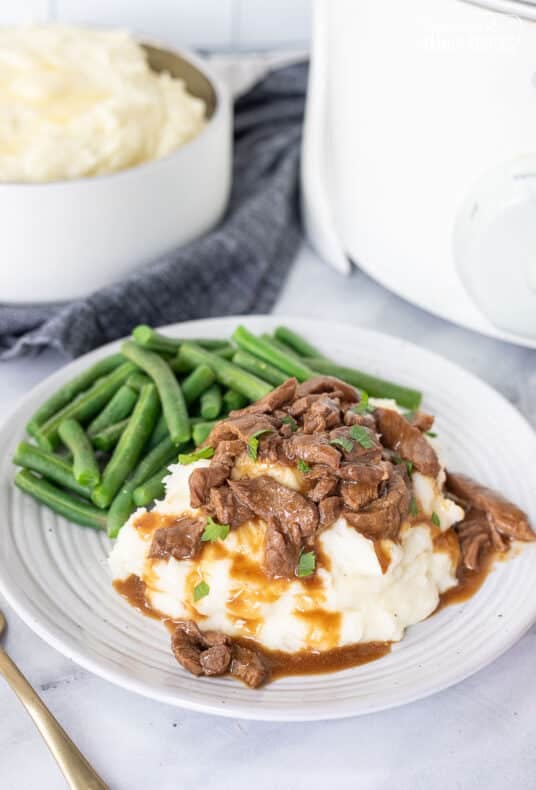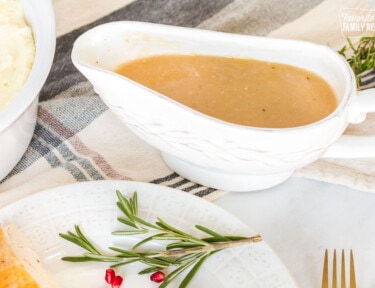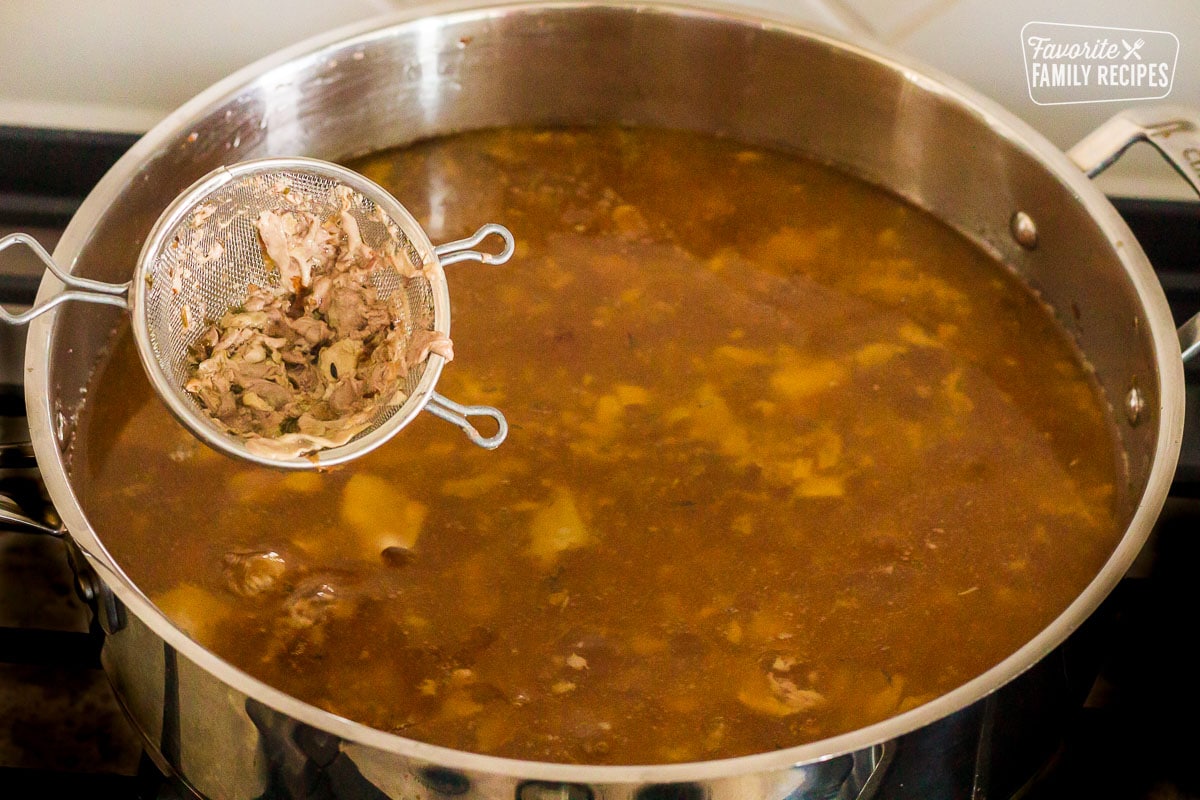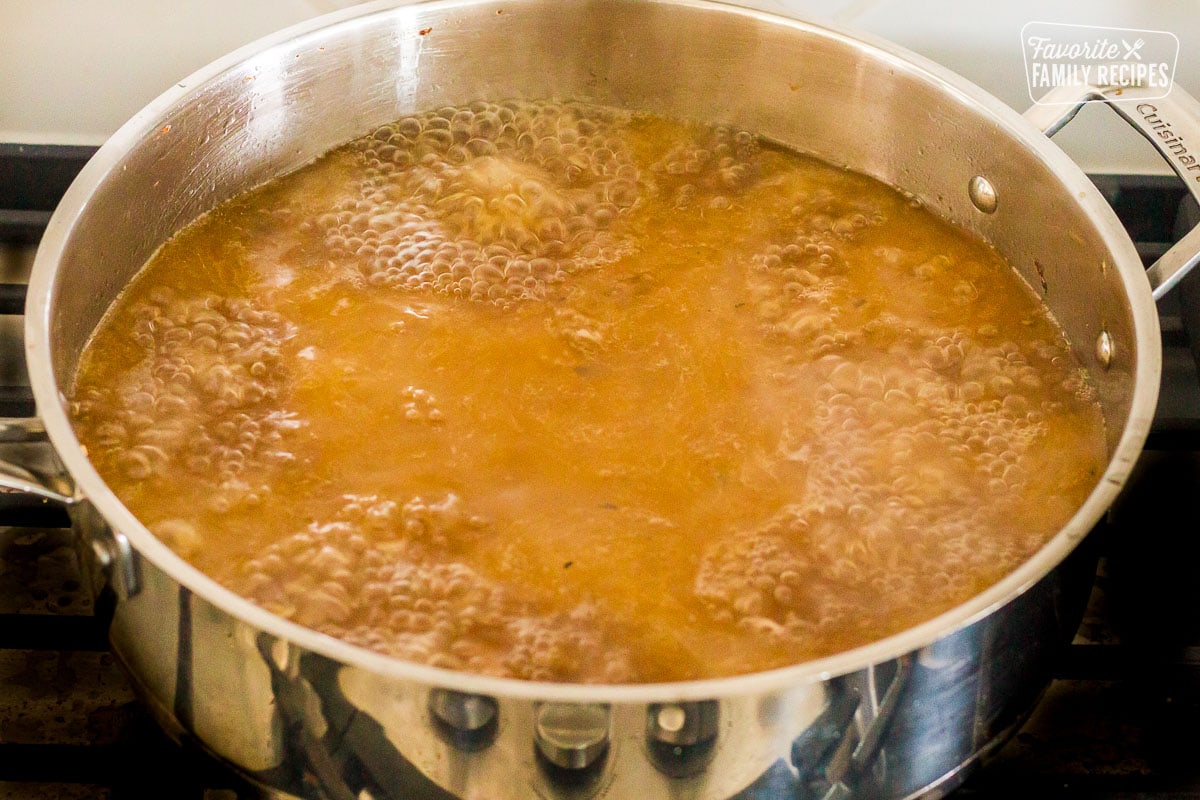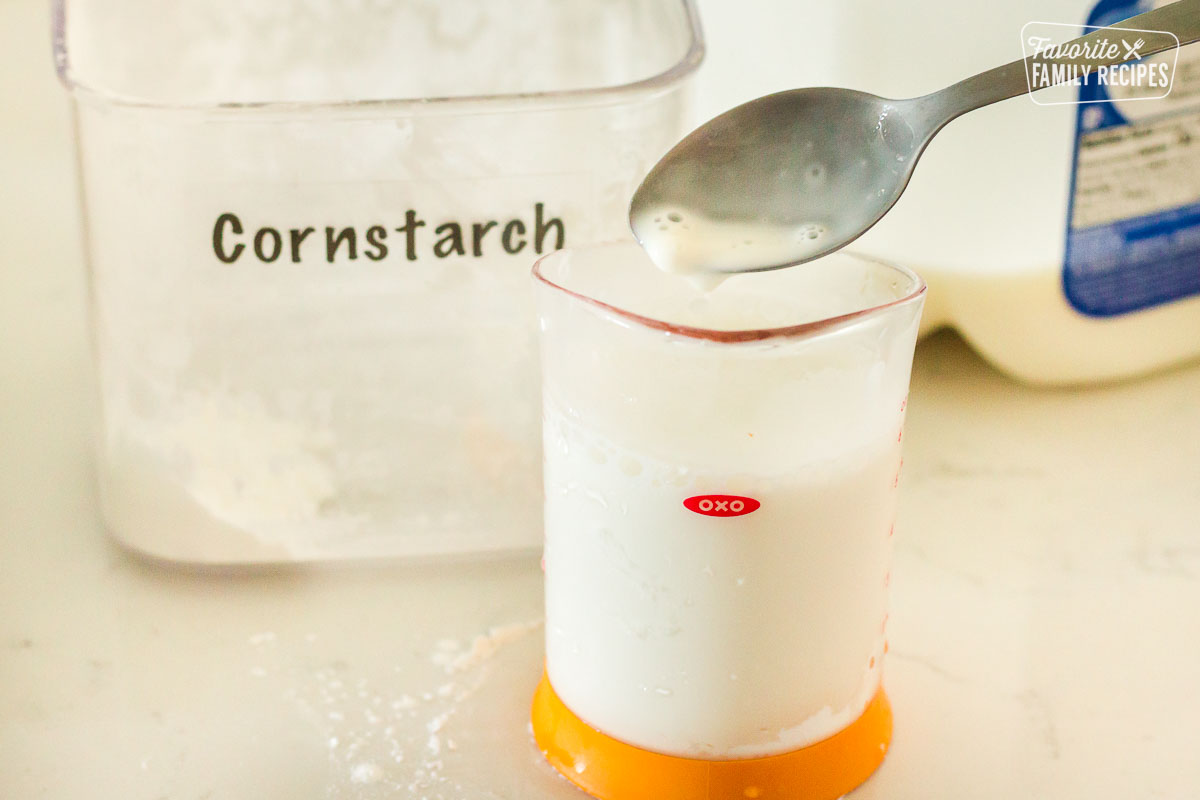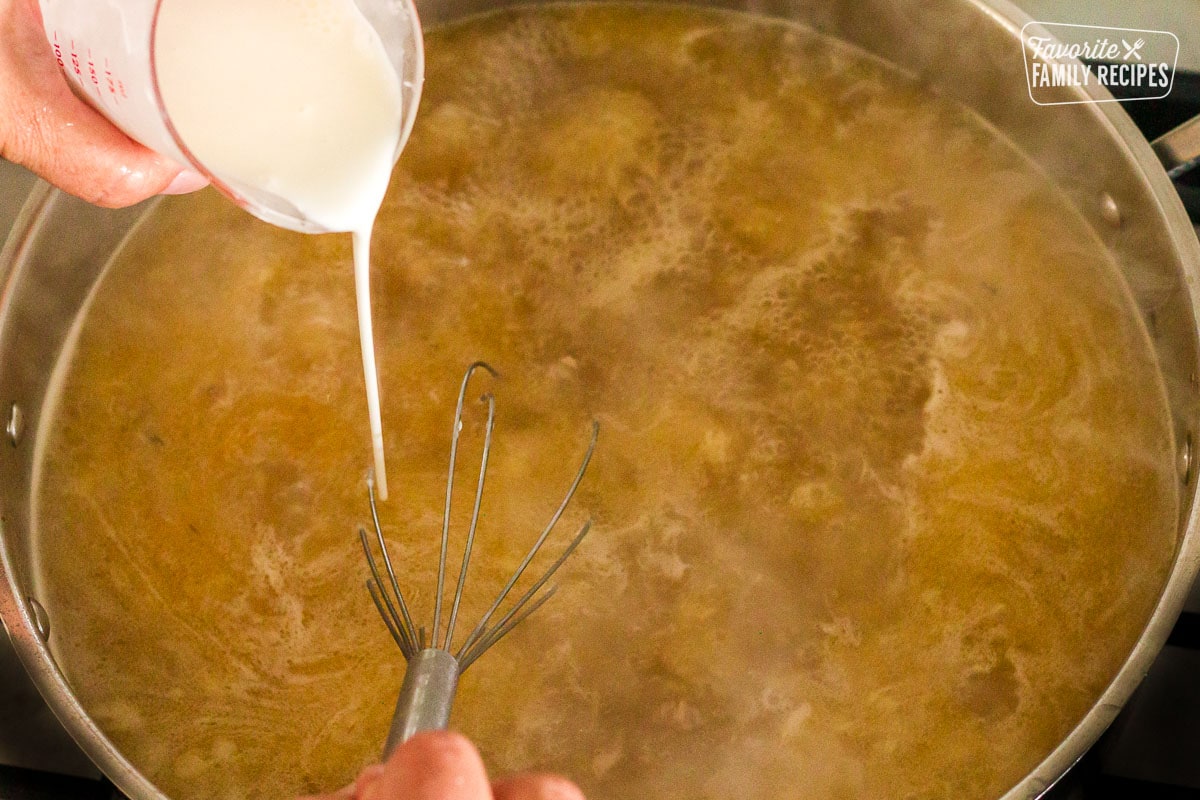If you know our Mom, you know she makes a traditional Sunday dinner. Every. Single. Sunday. When we were growing up, she would alternate weeks between roast and turkey. Seriously, it was like Thanksgiving every other week. We were beyond spoiled. Our mother is the best cook we know. Everything she makes is perfection. But the thing she is most famous for is her turkey gravy. Anyone who has shared her table over the years asks for this turkey gravy recipe. Until now, we’ve never even written it down; it was just made to taste. But, Mom was generous enough to share her step-by-step method for creating this savory, divine gravy. It’s delicious over all the classic dishes: mashed potatoes, turkey, vegetables, stuffing, roasted carrots, just about anything. Welcome to the best turkey gravy recipe EVER. We know you’ll love it as much as we do.
Ingredients for Turkey Gravy
There is no real “secret” ingredient in this easy turkey gravy recipe, just ingredients that probably everyone has around the house! So here’s what you need to make the most show-stopping gravy ever:
Turkey drippings – From a roast turkey. Use a liquid measuring cup to get all that rich, delicious broth that comes from the turkey for the best flavor. If you don’t have enough drippings, use turkey stock, chicken broth or chicken stock to supplement. Gravy packet – Usually a packet of dry gravy mix is included with the frozen turkey or turkey breast. If your turkey doesn’t have one, a tablespoon or two of chicken or turkey gravy powder works great too. Chicken bouillon – We love Wyler’s chicken bouillon granules, but you can use cubed bouillon or your preferred chicken bouillon. Pepper – Freshly ground pepper tastes best. Milk – You’ll need two cups of whole milk or you can use a mixture of milk and heavy cream for a thicker gravy. Cornstarch – This is used to thicken the gravy. You can use all purpose flour too. Water – To combine with the cornstarch to make a slurry which will thicken the gravy. Salt – To taste.
How to Make Turkey Gravy
Prepare the Turkey Drippings
This recipe incorporates the rich drippings from roasting a turkey or turkey breast. After roasting in the oven, transfer the turkey to a carving board, leaving the flavorful drippings in the roasting pan. Position the roasting pan over the largest stovetop burner, set to medium heat. If the liquid in the pan measures less than one cup, simply add sufficient water to reach that quantity. Vigorously whisk to incorporate any caramelized remnants that may have adhered to the pan. This enhances the flavor of the gravy. The stovetop’s heat assists in loosening these flavorful bits from the pan’s sides. *Note: If you’ve used an aluminum pan for roasting, do not place it directly on the stovetop. Instead, add water to the drippings to reach one cup and use a whisk or spoon to release the browned bits from the pan’s bottom.
Remove Fat and Turkey Bits
Pour the liquid from the pan into a tempered glass measuring cup or bowl that holds 2 cups or more. The fat will rise to the top. Use a spoon to skim off the fat. Then, pour the remaining liquid through a wire strainer into a medium-sized saucepan to remove any turkey bits or fat. This will ensure your gravy is nice and smooth.
Add Gravy Packet and Seasonings
If a gravy packet came with the turkey, you can add it to the saucepan (skip this step for a gluten-free gravy). Bring the liquid to a boil over medium-high heat, then lower the heat to let it simmer. Stir in the bouillon granules and pepper, ensuring they dissolve evenly. Once dissolved, whisk in the milk gradually, then bring it back to a simmer. This gives the gravy a creamy texture. Taste the gravy to check for flavor balance. If it needs more depth, add more chicken bouillon and pepper. Avoid adding salt at this point, as the gravy may become too salty once all the flavors combine while it simmers. Stir the gravy occasionally to prevent lumps.
Thicken the Gravy
In a small bowl, mix cornstarch and water until smooth, making sure there are no lumps. While continuously whisking the gravy, slowly add the starch mixture until the gravy reaches your desired consistency. Keep it slightly thinner than you prefer, as it will thicken more as it cools. Taste the gravy again and, if necessary, add a bit of salt for flavor.
Serve the Gravy
Keep the gravy warm on the stove until you are ready to serve it. Pour the gravy into a gravy boat for easy pouring onto mashed potatoes or turkey. You can also serve it in a bowl with a ladle. Read More: 35 + Traditional Thanksgiving Dinner Ideas
More Delicious Gravy Recipes
No matter what you’re serving, there’s a scrumptious, savory gravy to go with it. For a step-by-step guide for making gravies and sauces, see our post on How to Make a Roux.
How to Make Turkey Gravy
Beef Gravy Recipe
Biscuits and Gravy
Instant Pot Pork Chops and Gravy
Crock Pot Steak and Gravy
We want to hear from you! Please leave a review. Rate and Review
